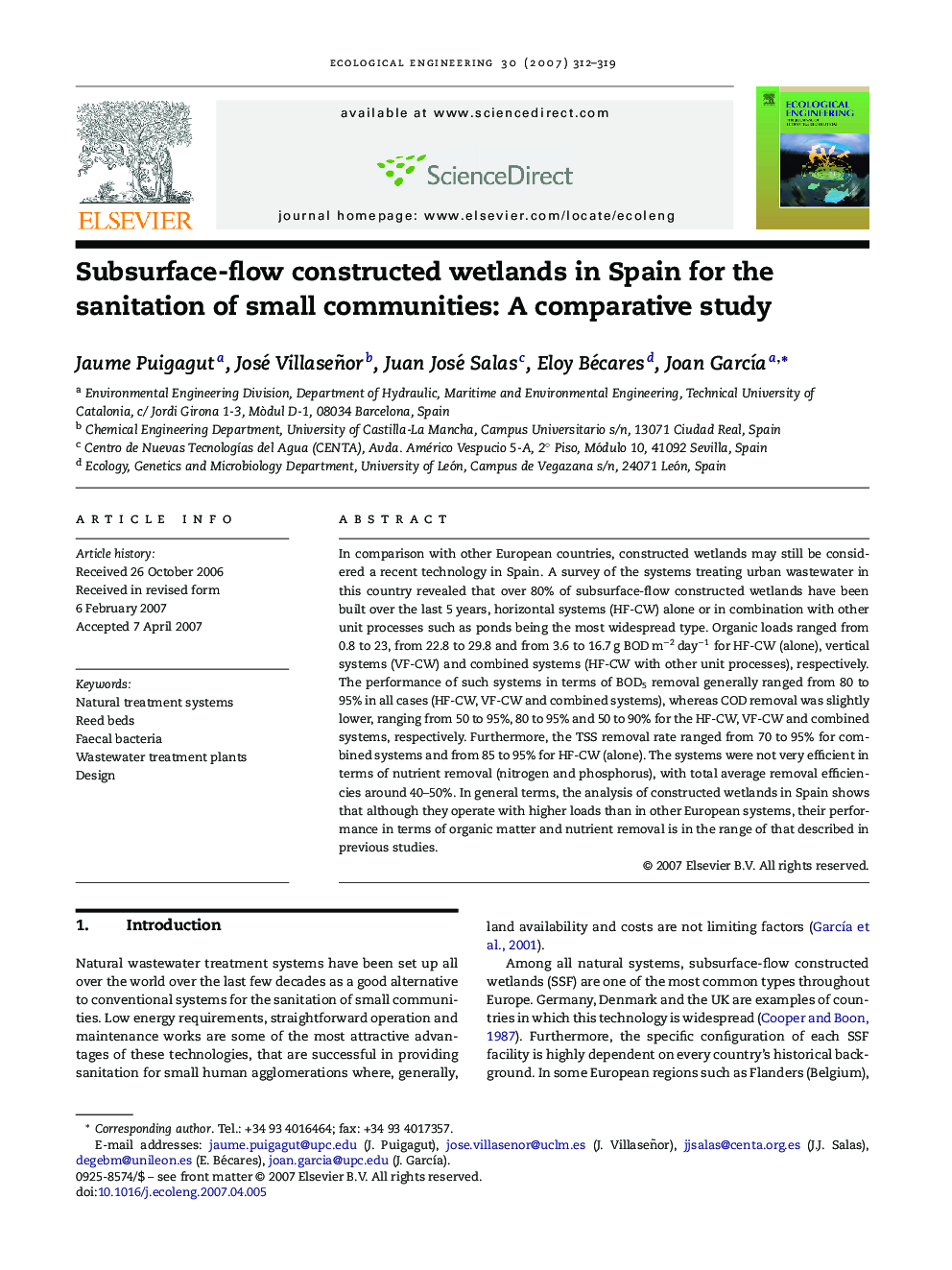| Article ID | Journal | Published Year | Pages | File Type |
|---|---|---|---|---|
| 4391074 | Ecological Engineering | 2007 | 8 Pages |
In comparison with other European countries, constructed wetlands may still be considered a recent technology in Spain. A survey of the systems treating urban wastewater in this country revealed that over 80% of subsurface-flow constructed wetlands have been built over the last 5 years, horizontal systems (HF-CW) alone or in combination with other unit processes such as ponds being the most widespread type. Organic loads ranged from 0.8 to 23, from 22.8 to 29.8 and from 3.6 to 16.7 g BOD m−2 day−1 for HF-CW (alone), vertical systems (VF-CW) and combined systems (HF-CW with other unit processes), respectively. The performance of such systems in terms of BOD5 removal generally ranged from 80 to 95% in all cases (HF-CW, VF-CW and combined systems), whereas COD removal was slightly lower, ranging from 50 to 95%, 80 to 95% and 50 to 90% for the HF-CW, VF-CW and combined systems, respectively. Furthermore, the TSS removal rate ranged from 70 to 95% for combined systems and from 85 to 95% for HF-CW (alone). The systems were not very efficient in terms of nutrient removal (nitrogen and phosphorus), with total average removal efficiencies around 40–50%. In general terms, the analysis of constructed wetlands in Spain shows that although they operate with higher loads than in other European systems, their performance in terms of organic matter and nutrient removal is in the range of that described in previous studies.
